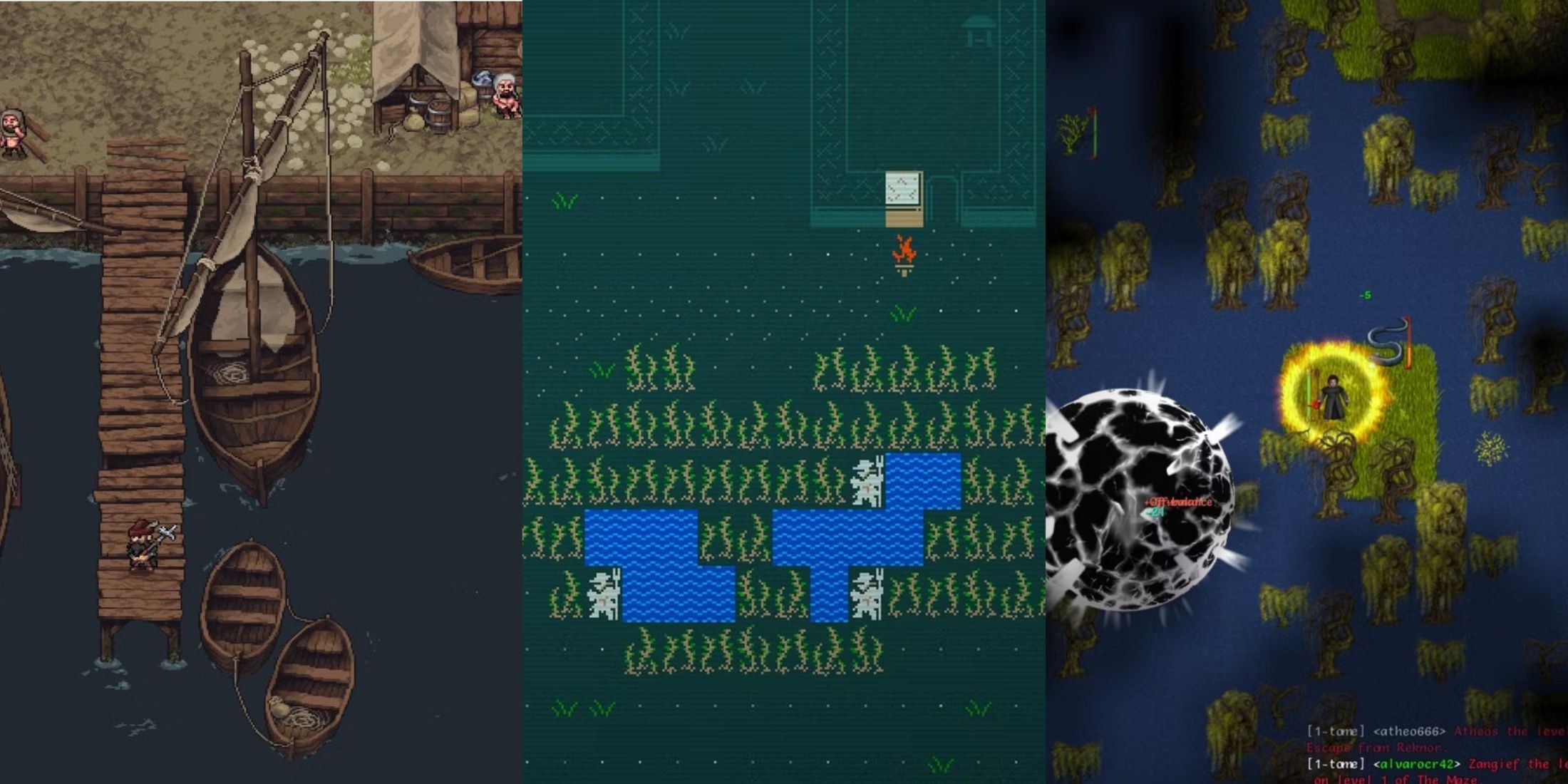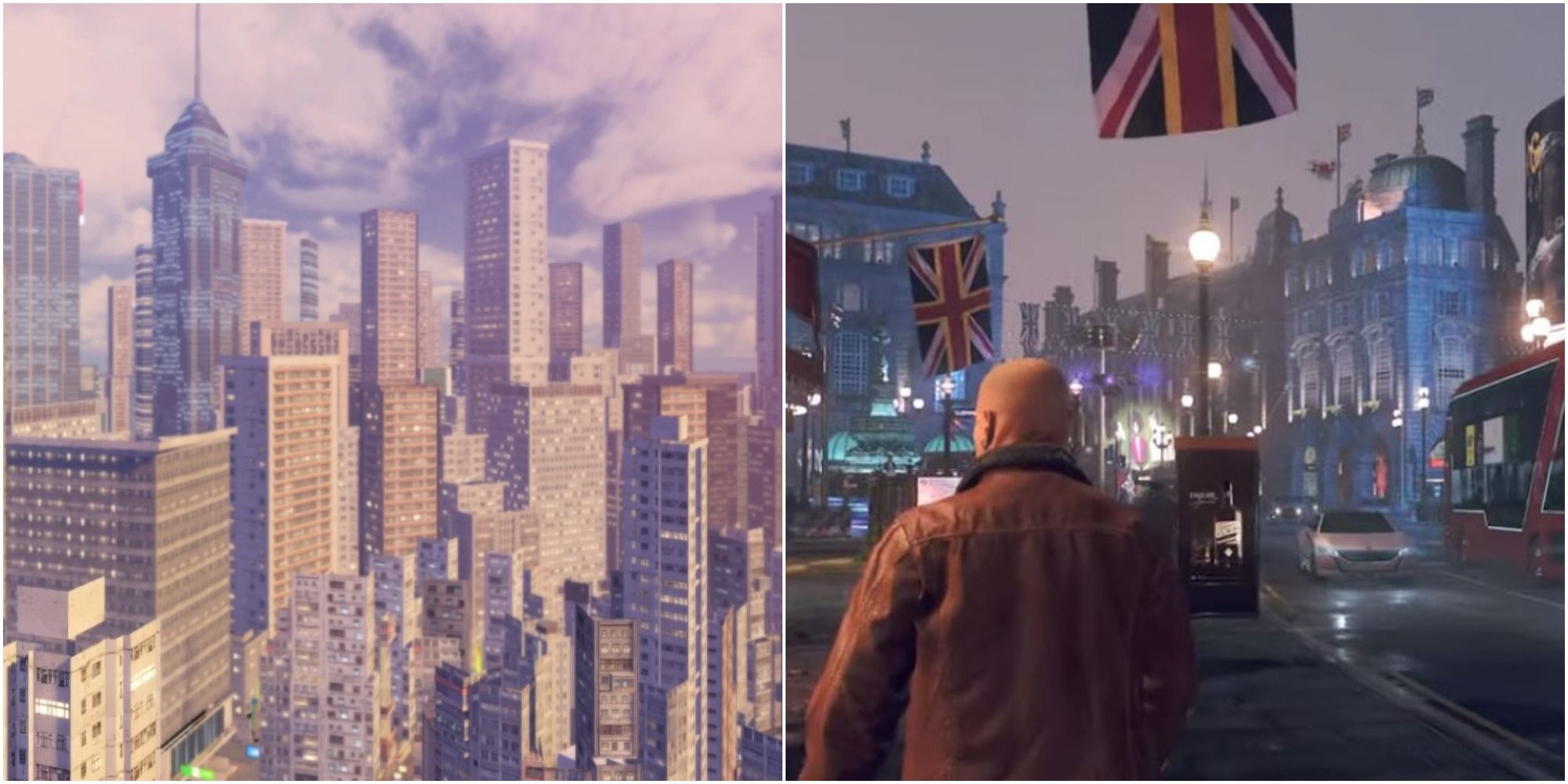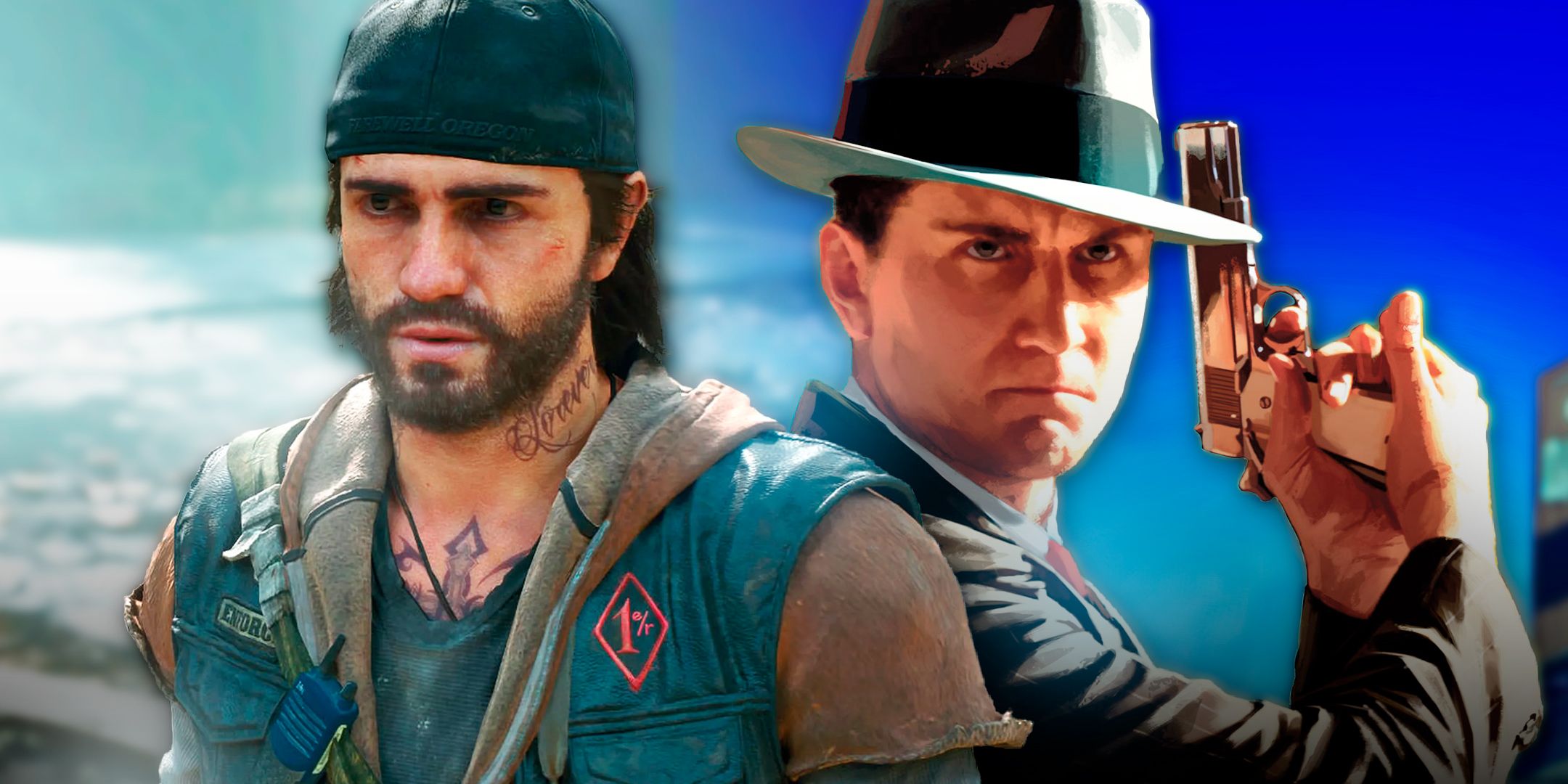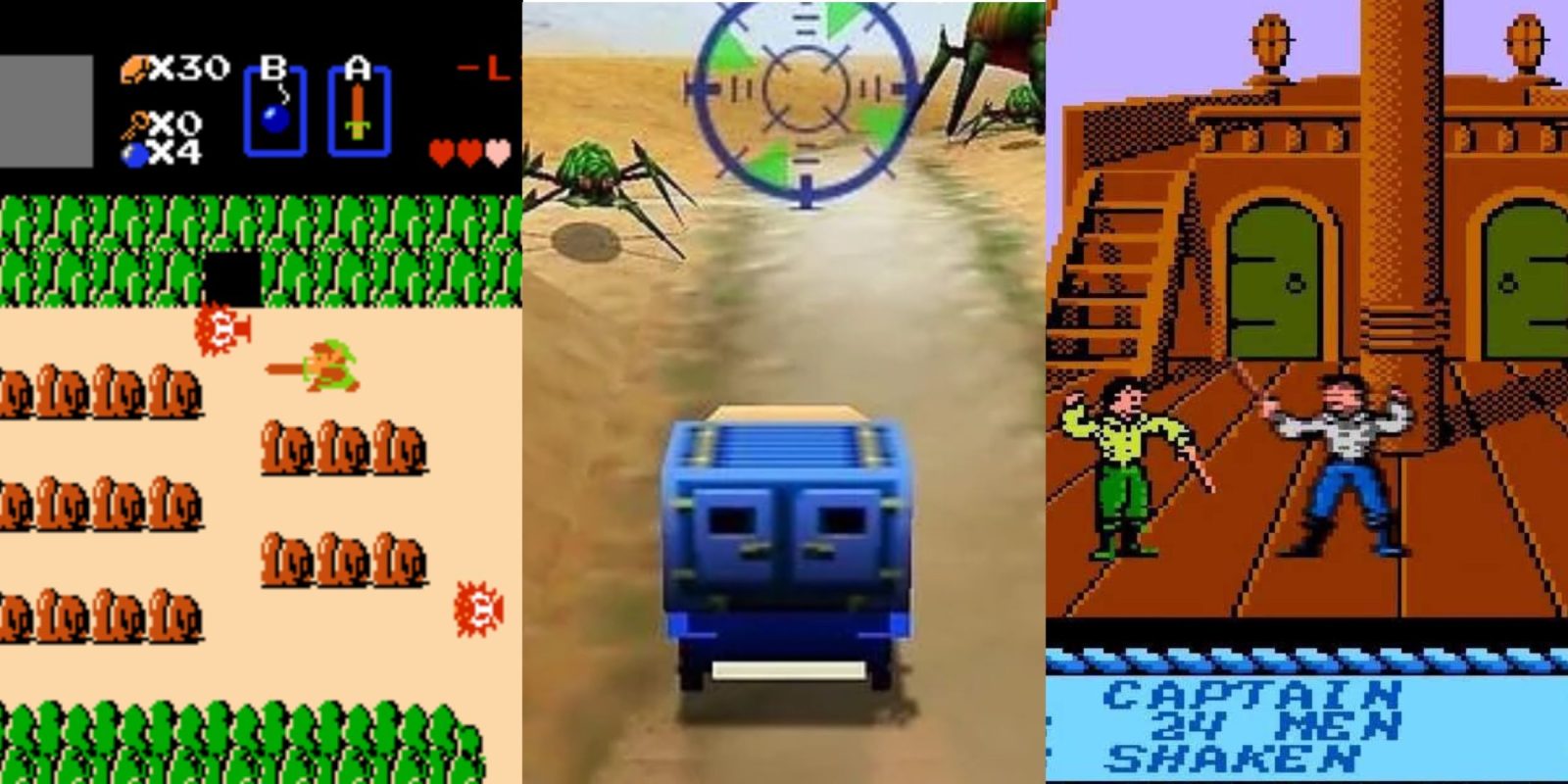Key Takeaways
- The Legend of Zelda set the standard for open-world hubs and hidden Easter eggs.
- Elite pioneered space-based open-world games using procedural generation.
- Body Harvest served as a precursor to GTA with open map missions and vehicle usage.
Open-world games are now a standard in video gaming, allowing players to traverse a vast area in any way they see fit. NPCs, combat, and exploration are all part of the package, and the idea was popularized most notably by 1997’s Grand Theft Auto for PlayStation, a game that would not only spawn a massively successful franchise but an entirely new, immersive way to play video games.

Related
Best Open World Roguelikes
These games effortlessly combine the depth and difficulty of roguelikes with the broadness of open-world games.
However, GTA was by no means the first game to do this. The idea of an open-world setting, especially one with a good story, is something that has been a part of video games for longer than some people might think. Here is a list of eight titles that laid down the blueprint for open-world gaming as we now know it.
Many of these titles are not open-world games in the modern sense but may include separate elements that were adopted by more modern games, such as open-world levels or an open-world hub.
8 The Legend Of Zelda
It’s Dangerous To Go Alone, Take This!
While it may seem primitive by today’s standards, there was nothing quite like The Legend Of Zelda when it first dropped nearly 40 years ago. The game set new standards for a pick-up-and-play experience that players could enjoy in their own homes. Its greatest contribution was an open-world hub, which allowed Link to travel in any direction and battle any enemy, health or special items permitting.
The very first Zelda game also helped popularize the granular details that can only be shared if its players communicate with one another, such as hidden items or rooms. Any open-world game with its own set of Easter Eggs or secret unlockables owes it a big debt, and its go-anywhere-do-anything template is still alive in the present day thanks to Breath Of The Wild and Tears Of The Kingdom.
7 Elite
Space Is The Place In This Technical Marvel
- Developers: David Braben and Ian Bell
- Platform: BBC Micro, Acorn Electron, Commodore 64, ZX Spectrum, Amstrad CPC, NES
- Release Date: September 20, 1984 (initial release for BBC Micro)
A miraculous feat of computer programming genius, Elite was a game without equal and set the precedent for contemporary space-based open-world titles like No Man’s Sky and Starfield. In this case, the open world was the cosmos itself, as players could explore deep space by traveling across galaxies, trading goods, and engaging in battle with other spacecraft. Along with the open-world hub embodied by the game’s galactic map, it also utilized procedural generation – a mechanic still utilized today – to bring its world to life.
Elite distinguishes itself by being one of the first games to use wire-frame 3D graphics, but it was also a pioneer in more ways than one. Completion of missions and set objectives enables the player to earn more funds in the game, a staple of open-world gaming up to the present day. The range of missions and the potential for exploration and discovery made this game a singularly unique experience at the time of release.
6 Body Harvest
A Proof-Of-Concept That Would Lay The Foundations For Greatness
- Developer: DMA Design (now Rockstar North)
- Platform: Nintendo 64
- Release Date: October 20, 1998 (North America), October 23, 1998 (Europe)
Body Harvest was a well-received science fiction action that got decent reviews but not much else. What makes it special, however, is that it was designed by DMA Design, which created the first Grand Theft Auto and then later became the video game industry behemoth Rockstar Studios.
The game, in which the player assumes the role of a future soldier battling an alien invasion, had an open map that allowed players to take missions in any order, and it also utilized vehicles in the same way that GTA later would. While it was released around the same time as GTA, it almost feels like a test run for the series, and a successful attempt to show how a modernistic open-world setting can make for a compelling gaming experience.
5 Shadowrun
Cyberpunks Run Riot In This 16-bit Classic
- Developer: Beam Software (SNES), BlueSky Software (Mega Drive)
- Platform: Super Nintendo Entertainment System (SNES), Mega Drive
- Release Date: May 1, 1993 (North America), March 1994 (North America)
It could be argued that there would be no Cyberpunk 2077 without Shadowrun, one of the earliest video games to take the Cyberpunk aesthetic and run with it. The game was released on both Nintendo’s SNES and the Sega Mega Drive. The two versions were each handled by a different developer, so there was some difference between the two, but both offered flexibility and choice in how gamers could carve out a path in the game world. Along with the main campaign, there were also a host of side missions, contract jobs, and other optional objectives, similar to the open-world games of the present day.

Related
13 Best Open World Games Set In A Single City
The best open worlds don’t have to be expansive to be full of content. These single-city settings provide endless entertainment for gamers.
Best described as hitting the sweet spot between Blade Runner and Dungeons & Dragons, Shadowrun sees players plunged into a murky future world where magic and advanced technology co-exist. Exploring the game world was crucial in order to discover information, grind, and obtain weapons, but it was left up to the player to explore and there was no one giving orders. Many different races and tribes populate the game’s world, and the amount of freedom that can be enjoyed feels very similar to open-world games in the present.
4 Hunter
Ahead Of Its Time In More Ways Than One
- Developer: Paul Holmes
- Platform: Amiga, Atari ST
- Release Date: 1991
Hunter feels now like an early prediction that foresaw Metal Gear Solid 5: The Phantom Pain. The parallels are obvious; a lone soldier wanders a hostile landscape in a manner of his choosing, either on foot or by vehicle. He has a range of weapons and can interact with other characters and enemy soldiers, and there is more than one way to achieve his objectives. It was the game’s overworld that has the most similarity to more modern games, and it exists as a wide-open space that helped solidify the sandbox concept.
The game used a day-and-night cycle and offered players a level of immersion like no other game of the time. While only a handful of people worked on the project, it stood out on release due to its many unique features and its sheer scope, all of which meant the title was rapturously received by critics and gamers alike.
3 Sid Meier’s Pirates!
Set Sail On The Wide Open Seas
- Developer: MicroProse (designed by Sid Meier)
- Platform: Initially released on Commodore 64, with ports for Apple II, Amstrad CPC, Atari ST, MS-DOS, NES, and others
- Release Date: 1987
Sid Meier made his name with Civilisation games. Still, his particular brand of immersive simulation titles first came to prominence via this game, which also happens to be the first game he made with his name in the title. As its title implies, it is based around the world of pirates and had, for its time, a huge open-world map that enabled non-linear exploration. The choices the player made were reflected in the fact that the game had more than one ending.
The variety of mini-games and sidequests, which included everything from rescue missions to combat and treasure hunting, established the template used by the more modern GTA and Red Dead Redemption games The player can either play as a pirate, pirate hunter, or privateer across the 16th, 17th and 18th centuries. The game gave players free rein not just in traversing oceans but also in their moral path, as it is possible to switch at any point from privateering to a more bloodthirsty pirate life.
2 Mercenary
Fight Your Way To Freedom In This Futuristic Action Adventure
- Released: 1985
- Developer: Novagen
- Platforms: Atari 8-bit, Atari ST, Amiga, Commodore 64, Commodore 16/116, Commodore Plus/4, ZX Spectrum
Mercenary was another game that didn’t let the technological limits of the time hamper its ambition. Using 3D graphics, it brought to life the expansive planet Targ, where the player finds themselves stranded and must somehow fight across it and gather resources so they can safely make their way home. It was another game that utilized the sandbox mechanic, as well as the use of vehicles for exploration.
The game also predicts the role of AI as the player frequently interacts with a sentient computer named Benson, which delivers a series of dry, witty remarks as the action unfolds. Mercenary was such a success that it was widely ported to several systems and got two sequels.
1 Wasteland
A Breakthrough In The RPG Genre
- Developer: Interplay Productions (designed by Brian Fargo)
- Platform: Apple II, Commodore 64, MS-DOS
- Release Date: 1988
When Wasteland was first released, role-playing games on home computers followed a set, linear pattern going from A to B. That all changed with the arrival of Wasteland, which took the then-revolutionary approach of creating a persistent game world that kept track of the player’s movements in such a way that previous areas could be returned to with progress intact. In particular, it introduced a stack of NPCs to interact with, another mechanic replicated in the GTA series.
The gameplay was very much in the mold of tabletop RPGs, and the player’s character had a number of attributes that could be leveled up via engaging in battle or utilizing various skills. Its in-game story of a desolate wasteland, which existed via an open-world hub similar to the Zelda games, was filled with survivors centuries after a global nuclear war. It paved the way for post-apocalyptic open-world gameplay which has since become a hallmark of the the Fallout series.
5:06

More
6 of the Best Open World Games That Didn’t Get a Sequel
Typically, when a game is super successful, a sequel tends to follow. However, sometimes even the most lucrative and critically acclaimed games are standalone adventures.













Leave a Reply